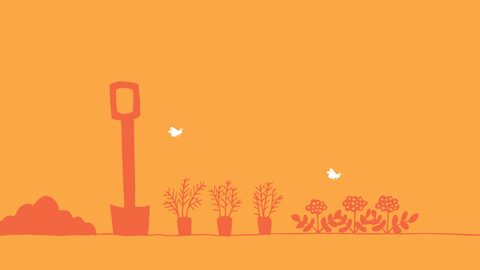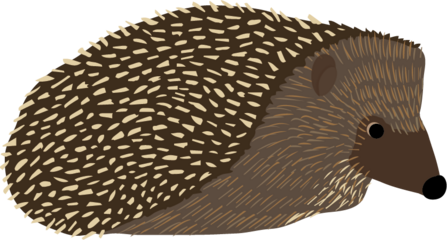
How to grow a wildlife- friendly vegetable garden
Pesticides vs natural pest control
One big step towards growing vegetables with wildlife in mind is to stop using chemical pesticides. These upset the natural balance of the environment and tend to kill everything off: 'pests' (which are wildlife too!) and their predators alike. Afterwards, pests may even recover much quicker without their natural predators to keep their numbers in check. So, try to be a bit more pest-tolerant, and allow their natural predators to do the work for you.

If you have already created a wildlife-friendly garden, all those creatures you have made a home for, such as toads, hedgehogs and birds, are your frontline in pest control
Given good soil conditions and no water stress, crops will grow strong and healthy, and will be more resistant to pests and diseases. High-nitrogen fertilisers can encourage sappy, leafy growth that’s more vulnerable to attack, so make sure you have a compost heap to provide plenty of animal-friendly, all-purpose soil improver.
Planning your wildlife-friendly vegetable garden
- Research pest control - try and learn as much as possible about the sort of pests which are attracted to your crops and the natural ways of controlling them. These include physical intervention like picking off slugs and aphids by hand, putting up barriers like crushed eggshells to prevent unwelcome intruders, and encouraging natural predators.
- Prepare your soil - it’s always good to prepare your soil by adding soil improvers like compost and green manure. Finding out what type of soil you have (for instance, its acidity, whether it’s clay or sandy, and how well it holds moisture) provides clues to what is likely to grow best. A plant grown in the wrong conditions will be stressed and more likely to succumb to pests or disease.
Establishing your vegetable garden
- Provide a decent environment for your veg to grow in – dig plenty of compost or leaf mould into your plot as fertiliser, and make sure it's well watered.
- A barrier of coarse bark or sharp gravel around the veg beds helps deter pests like slugs and snails. If you have raised beds, try running some copper wire around the sides to form a slug- and snail-proof ring.
The principle of companion planting is that certain plants either attract insects away from your crops or actually deter them. Marigolds are widely used to counter eelworms and, at the very least, brighten up the look of your vegetable patch!
How to stop garden pests
- Pick off the pests - keep an eye out for caterpillars, aphids, slugs and other vegetable chompers and handpick what the birds and hedgehogs don’t get first.
- Wrap up your veg - use horticultural fleece to cover newly planted vegetables as a non-toxic means of pest control. Don’t forget to provide plenty of other feeding opportunities for the more welcome visitors to your garden who would have eaten the pests you’ve deterred.
- Protect your crop - the birds that you have tempted into your garden might not differentiate between what’s meant for them and what’s meant for your table. As long as there is plenty for them to eat, don’t feel bad about protecting your fruit with netting and jangly items like strung-up tin cans and CDs.
- Stop slugs by creating a barrier that they won't want to cross. Wool pellets, eggshells, coffee grounds, bark and soot all work. However they do require some maintenance - reapplying is key.
Top tips
- Carrot flowers, like all umbellifers, are a big hit with many insects, especially aphid-eating hoverflies, so leave a few to flower.
- A nearby patch of weeds can be a bonus. It is unlikely to harbour the pests which are detrimental to the veg plot, but may well host many of their predators.
- Aromatic herbs are really popular with insects, so include things like borage, sage and mint in your veg plot. Sink them into the ground in their pots to stop them spreading.



